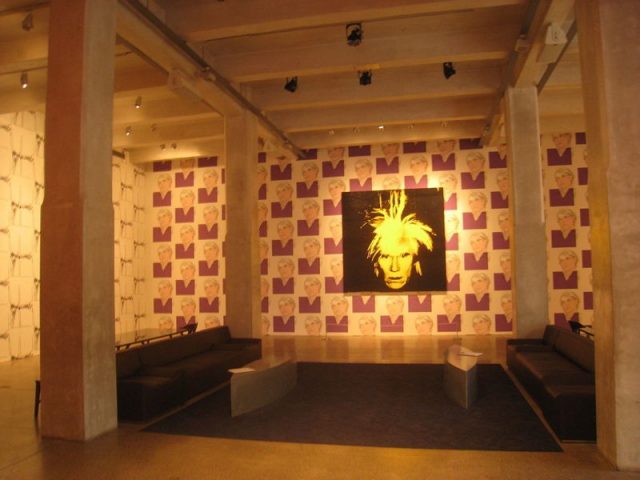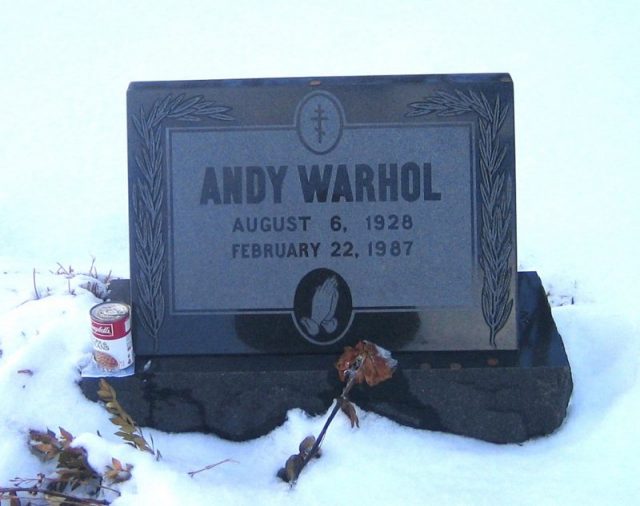Next year the Vatican Museums will be holding an Andy Warhol exhibition. While this sounds surreal, it actually shines a light on a lesser-documented side of the artist’s character. Namely his religious conviction.
Though he’s associated with the Pop Art movement and its excesses, the driving force behind Warhol was the Catholic Church, specifically the Ruthenians. Andrew Warhola was born in Pittsburgh in 1928, but his family was from what’s now known as northeast Slovakia.

Earlier this year, when covering news about the exhibition, the Catholic Herald described Ruthenians as “members of a small Byzantine Catholic Church that grew out of Cyril and Methodius’s mission to the Carpathian Mountains.” Saints Cyril and Methodius were missionaries whose arrival had an enormous influence on Slavic faith and culture.

As a result of this upbringing, the metropolitan Warhol would regularly attend Mass and work with the homeless when he wasn’t daubing on a canvas. He and his mother “would pray together in Old Slavonic before he left for the Factory. He always carried a rosary and a small missal in his pocket”.

As far as the Vatican Museums are concerned, it’s a marriage made in heaven. Quite literally. Director Barbara Jatta is quoted in The Art Newspaper as saying, “We are very interested in exploring the artist’s spiritual side… It is very, very important for us to have a dialogue with contemporary art. We live in a world of images and the Church must be part of this conversation.”
The Vatican is joining forces with the Andy Warhol Museum in his hometown city for a celebration that will happen in both Rome and Pittsburgh. 2019 also marks the 25th anniversary of the latter’s tourist attraction.

The paper goes into detail about the Italian side of the enterprise, painting a vivid picture of “memento mori canvases such as silkscreens of skulls, as well as films and archival materials. In Rome, it will take place in the Braccio di Carlo Magno, a 1,000 sq. m display space in St Peter’s Square designed by Gian Lorenzo Bernini.”
Warhol portraits set for up £22 million at auction
Art inspired by religion can certainly be amongst the most beautiful in the world. However, Warhol’s depictions of brand names and garish celebrity portraits seem at odds with the principles that guided him behind the public image. Despite this outward appearance religion played a key role in his work.

The Catholic Herald draws attention to Warhol’s preoccupation with one of the most famous religious paintings of all time, Da Vinci’s The Last Supper.
He “became obsessed… He produced hundreds of variations on this theme, many of them with colorful brand logos – Dove Soap, General Electric – stamped on top of a black-and-white stencil of the masterpiece. The ordinary overwhelms the extraordinary. The implication is that our appetites distract us from the vision of Christ.”

Though Warhol died in 1987 and was distant in interviews, it’s safe to assume he would find the Vatican exhibition a great honor. He met Pope John Paul II in 1980 and his strict devotion even led him to controversially repress his homosexuality. Warhol didn’t hide being gay but failed to support efforts to normalize it.
The Herald reports on how he toned down his trademark look for the handshake with the Pontiff, how he “wore his tamest wig and his plainest tie as a gesture of respect to the Holy Father.” They believe this shows the artist in his truest light: “For once, he looks like a person, not a symbol or a caricature. The Vatican Museums exhibition will be something of a homecoming.”
It no doubts will be, but eyebrows will be raised around the world that a symbol of the swinging Sixties was underpinned by reverence for the Catholic tradition.
Steve Palace is a writer, journalist and comedian from the UK. Sites he contributes to include The Vintage News, Art Knews Magazine and The Hollywood News. His short fiction has been published as part of the Iris Wildthyme range from Obverse Books.
